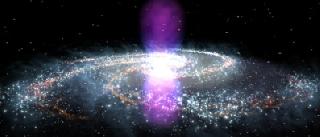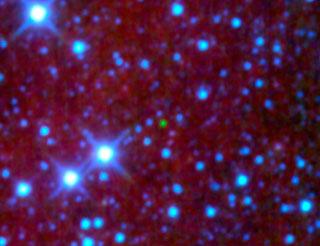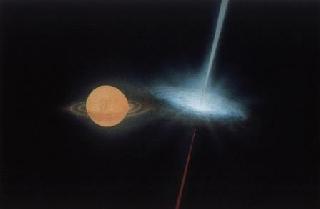
The giant, mysterious structure was spotted by NASA's Fermi space telescope. A NASA photo
CAMBRIDGE (BNS): A giant, mysterious structure looking like a pair of bubbles and covering a vast area at the heart of Milky Way galaxy has been spotted by astronomers.
The never-before-seen structure, believed to be gamma-ray bubbles, spans 50,000 light years which is equivalent to the discovery of a new continent on Earth.
“What we see are two gamma-ray-emitting bubbles that extend 25,000 light-years north and south of the galactic center,” said Doug Finkbeiner, an astronomer at the Harvard-Smithsonian Center for Astrophysics (CfA) in Cambridge, US, who first spotted the feature.
“We don't fully understand their nature or origin,” Finkbeiner said.
At more than 100 degrees across, the structure spans more than half of the sky, from the constellation Virgo to the constellation Grus. Scientists believe it may be millions of years old.
The discovery was made by using data from NASA’s Fermi Gamma-ray Space Telescope.
The structure’s shape and emissions suggest it was formed as a result of a large and relatively rapid energy release – the source of which remains a mystery, NASA said. Astronomers believe it may be the remnant of an eruption from a massive black hole at the centre of our galaxy.
The bubbles also may have formed as a result of gas outflows from a burst of star formation, perhaps the one that produced many massive star clusters in the Milky Way's central light-years several million years ago.
“In other galaxies, we see that starbursts can drive enormous gas outflows,” said David Spergel at Princeton University in New Jersey. “Whatever the energy source behind these huge bubbles may be, it is connected to many deep questions in astrophysics.”
The structures eluded previous astronomers studying gamma rays due in part to the so-called “diffuse emission” – a fog of gamma rays that appears all over the sky. The emissions are caused by particles moving near the speed of light interacting with light and interstellar gas in the Milky Way.
According to Finkbeiner, hints of the bubbles had appeared in earlier spacecraft data, including the Germany-led Roentgen X-ray Satellite (ROSAT) and NASA’s Wilkinson Microwave Anisotropy Probe (WMAP).
The new findings are detailed in the upcoming issue of The Astrophysical Journal.
 Previous Article
Previous Article Next Article
Next Article













The Indian Air Force, in its flight trials evaluation report submitted before the Defence Ministry l..
view articleAn insight into the Medium Multi-Role Combat Aircraft competition...
view articleSky enthusiasts can now spot the International Space Station (ISS) commanded by Indian-American astr..
view article